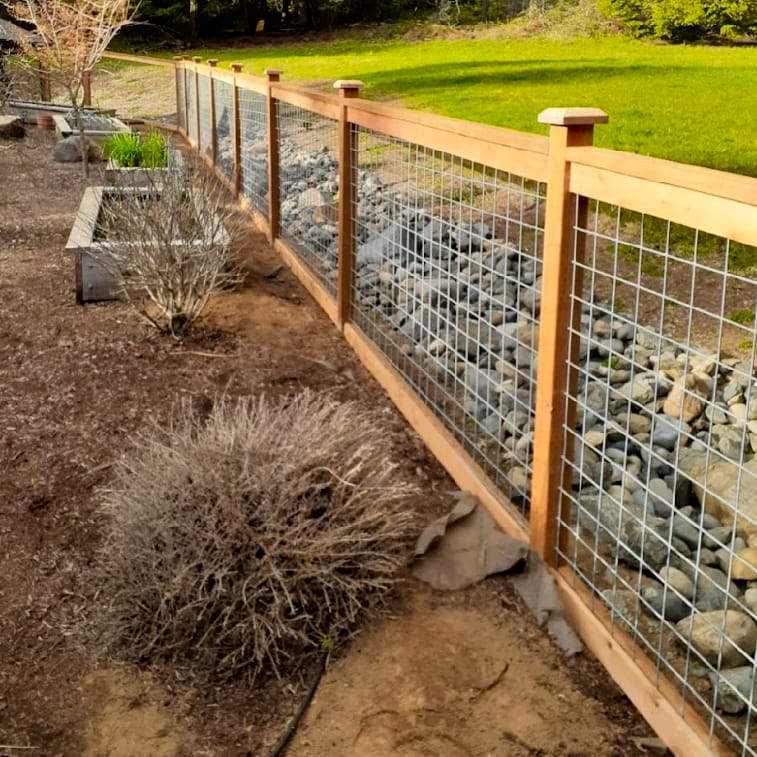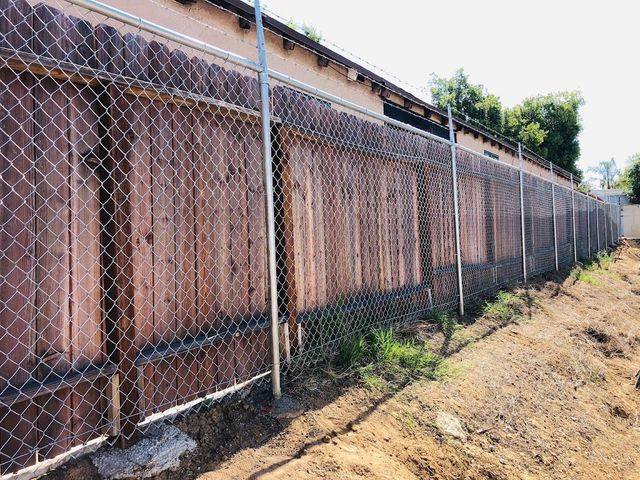All Categories
Featured
Fencing setup is a simple process oftentimes, however the moment it takes can vary relying on numerous variables. From the kind of material to the dimension of your residential property, comprehending what affects the timeline can help you intend successfully. Commonly, fencing setups range from 1 to 5 days, but particular projects might take longer relying on their intricacy.
Typical Setup Timelines. Tiny Residential Fences: A simple fence for a tiny lawn (under 150 feet) can usually be completed in 1-- 2 days. Medium-Sized Fences: Fences that cover medium-sized buildings (200-- 300 feet) usually take 2-- 4 days to mount. Intricate or big Fences: For bigger homes or fences with intricate layouts, anticipate the timeline to encompass 3-- 5 days or even more. Variables That Impact Setup Time.
![]()
Timber: Wood fencings take longer due to the fact that each panel or board have to be cut, aligned, and protected individually. Extra actions like staining or painting might expand the timeline. Vinyl: Plastic fences, which frequently are available in pre-assembled panels, are quicker to set up, reducing labor time. Chain-Link: This is one of the fastest choices, as the installation procedure involves less steps. Metal or Wrought Iron: Heavy and frequently personalized, these fences demand accuracy and additional time for appropriate alignment and attachment. Composite: Comparable to plastic, composite fence is effective to install, though its weight might slightly influence speed. 2. Home Dimension and Surface. The size and design of your home straight influence how much time it will take to complete the installment:
Flat Land: Setup on also, flat terrain is much faster and a lot more straightforward. Inclines or Irregular Ground: Unequal surfaces or hilly locations call for changes, which add time to the procedure. Obstructions: Trees, rocks, or other obstacles may require to be removed, increasing the timeline. 3. Weather. Weather condition plays a vital duty in fence installment. Rainfall, snow, or extreme temperature levels can slow down or stop work. Damp or frozen soil, as an example, can be tougher to dig through for article positioning.
![]()
Just How to Ensure a Smooth Installment Refine. Plan Ahead: Coordinate with your contractor to identify the most effective timeline for setup and stay clear of peak seasons when demand is high. Prepare Your Residential Or Commercial Property: Clear the location of particles, plants, or barriers that might postpone the procedure. Obtain Permits Early: Start the paperwork for necessary authorizations as quickly as you make a decision to mount a fencing. Pick the Right Materials: Select fencing products that align with your preferred timeline and maintenance needs. Final thought. The moment it takes to install a fence depends on various elements, including the material, residential property dimension, climate condition, and project complexity. While many installments are finished within a few days, being prepared and functioning with skilled specialists can enhance the procedure. By addressing prospective difficulties beforehand and selecting materials intelligently, you can ensure your fence job is finished efficiently and satisfies your assumptions.
Typical Setup Timelines. Tiny Residential Fences: A simple fence for a tiny lawn (under 150 feet) can usually be completed in 1-- 2 days. Medium-Sized Fences: Fences that cover medium-sized buildings (200-- 300 feet) usually take 2-- 4 days to mount. Intricate or big Fences: For bigger homes or fences with intricate layouts, anticipate the timeline to encompass 3-- 5 days or even more. Variables That Impact Setup Time.
- Material Kind. Different materials call for varying degrees of initiative and time to install:

Timber: Wood fencings take longer due to the fact that each panel or board have to be cut, aligned, and protected individually. Extra actions like staining or painting might expand the timeline. Vinyl: Plastic fences, which frequently are available in pre-assembled panels, are quicker to set up, reducing labor time. Chain-Link: This is one of the fastest choices, as the installation procedure involves less steps. Metal or Wrought Iron: Heavy and frequently personalized, these fences demand accuracy and additional time for appropriate alignment and attachment. Composite: Comparable to plastic, composite fence is effective to install, though its weight might slightly influence speed. 2. Home Dimension and Surface. The size and design of your home straight influence how much time it will take to complete the installment:
Flat Land: Setup on also, flat terrain is much faster and a lot more straightforward. Inclines or Irregular Ground: Unequal surfaces or hilly locations call for changes, which add time to the procedure. Obstructions: Trees, rocks, or other obstacles may require to be removed, increasing the timeline. 3. Weather. Weather condition plays a vital duty in fence installment. Rainfall, snow, or extreme temperature levels can slow down or stop work. Damp or frozen soil, as an example, can be tougher to dig through for article positioning.
- Licenses and Authorizations. Some areas require licenses or approval from a house owners' association (HOA) prior to setup can start. Delays in safeguarding these papers might postpone your project.
- Design Complexity. A straightforward fence is quicker to install than one with custom-made features. Gates, curves, or ornamental aspects need more time for correct fitting and assembly.

- Labor Force Dimension and Proficiency. The dimension and skill level of the installation crew can likewise influence the timeline. Experienced service providers with a larger team can finish the work quicker than smaller or less experienced teams.
Just How to Ensure a Smooth Installment Refine. Plan Ahead: Coordinate with your contractor to identify the most effective timeline for setup and stay clear of peak seasons when demand is high. Prepare Your Residential Or Commercial Property: Clear the location of particles, plants, or barriers that might postpone the procedure. Obtain Permits Early: Start the paperwork for necessary authorizations as quickly as you make a decision to mount a fencing. Pick the Right Materials: Select fencing products that align with your preferred timeline and maintenance needs. Final thought. The moment it takes to install a fence depends on various elements, including the material, residential property dimension, climate condition, and project complexity. While many installments are finished within a few days, being prepared and functioning with skilled specialists can enhance the procedure. By addressing prospective difficulties beforehand and selecting materials intelligently, you can ensure your fence job is finished efficiently and satisfies your assumptions.
Latest Posts
Explore the Top Auto Repair Deals in Montclare, Chicago
Published May 23, 25
1 min read
Signs When Your Car Needs Professional Auto Repair at Montclare Auto Repair
Published May 23, 25
1 min read
Discover Cut Costs on Car Maintenance with Montclare Auto Repair’s Special Deals
Published May 22, 25
1 min read
More
Latest Posts
Explore the Top Auto Repair Deals in Montclare, Chicago
Published May 23, 25
1 min read
Signs When Your Car Needs Professional Auto Repair at Montclare Auto Repair
Published May 23, 25
1 min read
Discover Cut Costs on Car Maintenance with Montclare Auto Repair’s Special Deals
Published May 22, 25
1 min read